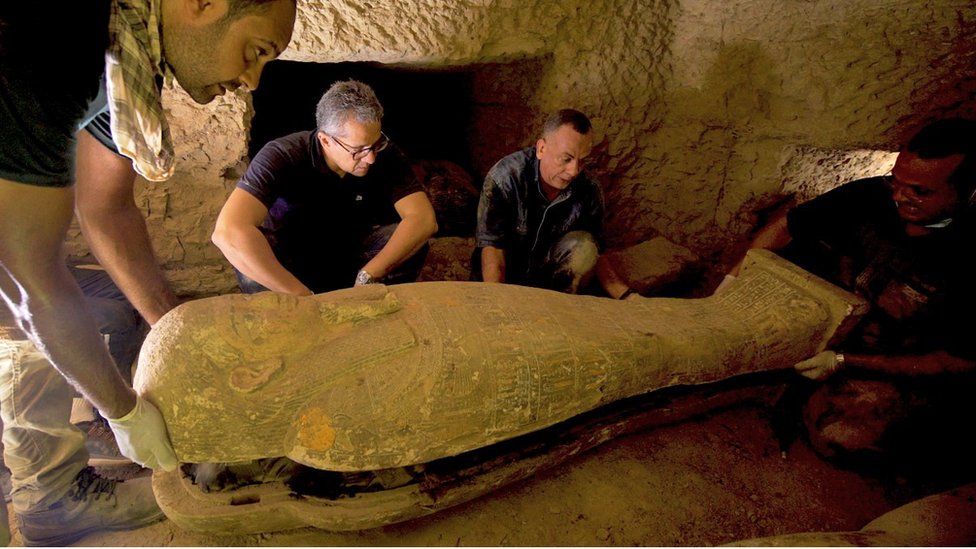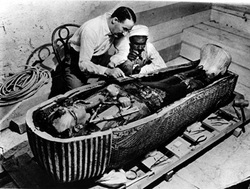


But it will take radiocarbon dating to know for sure. The team hypothesized that the crocodile mummies were buried around the fifth century B.C., when animal mummification was increasingly popular in Egypt. “From the Ptolemaic period onward, they used huge quantities of resin,” Dr. Ikram said.Ī lack of resin also indicated that the crocodiles were probably mummified by being buried in the hot, sandy soil, where they dried out naturally before being entombed, which the researchers proposed happened before the Ptolemaic period, which lasted between 332 B.C. Salima Ikram, an Egyptologist at the American University in Cairo who was not involved in the study, said that gathering this kind of information provided insight into ancient Egyptian understanding of the distinct behaviors of these two species and which the Egyptians would want to interact with, “because niloticus will eat you, whereas with suchus, you can conceivably swim in the same pool and live,” Dr. De Cupere said.īased on skull shape and how the bony plates, or scutes, on the animals were arranged, the team hypothesized that the majority of crocodiles in the tomb appeared to be one species, Crocodylus suchus, while others were Crocodylus niloticus. “You have archaeologists doing an excavation and, if they find animal remains that they think are worth looking at, that’s when we come into the picture,” Dr. De Cupere studies everything including bones, teeth and shells as well as coprolites, or fossilized feces, and animal prints. In one of the tombs - sandwiched between the dump site and four human burials believed to be from around 2100 B.C. In 2018, researchers uncovered seven small tombs under a Byzantine-era rubbish dump. She was called to the Qubbat al-Hawa site by a research team led by Alejandro Jiménez Serrano, an Egyptologist from the University of Jaén in Spain. Bog Bodies: The first comprehensive survey of a 7,000-year-old bog burial tradition reveals an often violent final ritual.Extinct Elephants: A study of butchered bones from 125,000 years ago suggests that for at least two millenniums Neanderthals hunted in what would come to be east-central Germany for the now-extinct straight-tusked elephants.On the Menu: Researchers discovered in a cave less than 20 miles from Lisbon the charred evidence that Neanderthals were cooking and eating brown crab 90,000 years ago.Hunter-Gatherers in Europe : Looking at DNA gleaned from ancient remains, researchers identified at least eight previously unknown populations of early Europeans.Uncovering the Past, One Discovery at a Time

Other mummified crocodile remains have been dug up, but most have been juveniles or hatchlings additionally, the ones discovered in this new study were in great shape. Mummified animals, including ibises, cats and baboons, are relatively common finds in Egyptian tombs. In addition to being linked to a deity, it was a food source, and parts of the animal, like its fat, were used as medicine to treat body pains, stiffness and even balding. The crocodile has played an important role in Egyptian culture for thousands of years. The discovery was detailed in the journal PLoS ONE on Wednesday. The mummies were among 10 adult crocodiles, likely from two different species, the remains of which were unearthed recently from a tomb at Qubbat al-Hawa on the west bank of the Nile River. But the animals above are mummies, possibly dead for more than 2,500 years and preserved in a ritual that likely honored Sobek, a fertility deity worshiped in ancient Egypt. Tutankhamun's tomb was discovered in 1922 nearly 400 miles south of the site in Giza in the Valley of the Kings in Luxor, by British archaeologist Howard Carter.īelieved to have become pharaoh when he was 8 or 9 years old, in around 1334 B.C., Tutankhamun ruled until his death 10 years later, and is believed to have suffered from numerous illnesses and disabilities, including a flat foot, circulatory problems and malaria.At first glance, you may think you’re looking at a picture of living crocodiles moving stealthily through mud. King Tutankhamun's death mask, found resting on his mummified shoulders.

Numerous objects associated with Tutankhamun are also set be displayed there, although the boy king’s famous death mask and sarcophagus are still on display at the Egyptian Museum in Cairo, in the interests of preserving tourism, Hawass said. Hawass said the coffins and antiquities found at the site would likely be displayed in the Grand Egyptian Museum in Giza, which is scheduled to open next year, although the project has stalled numerous times because of political instability and lack of government funding, according to the museum’s website.


 0 kommentar(er)
0 kommentar(er)
